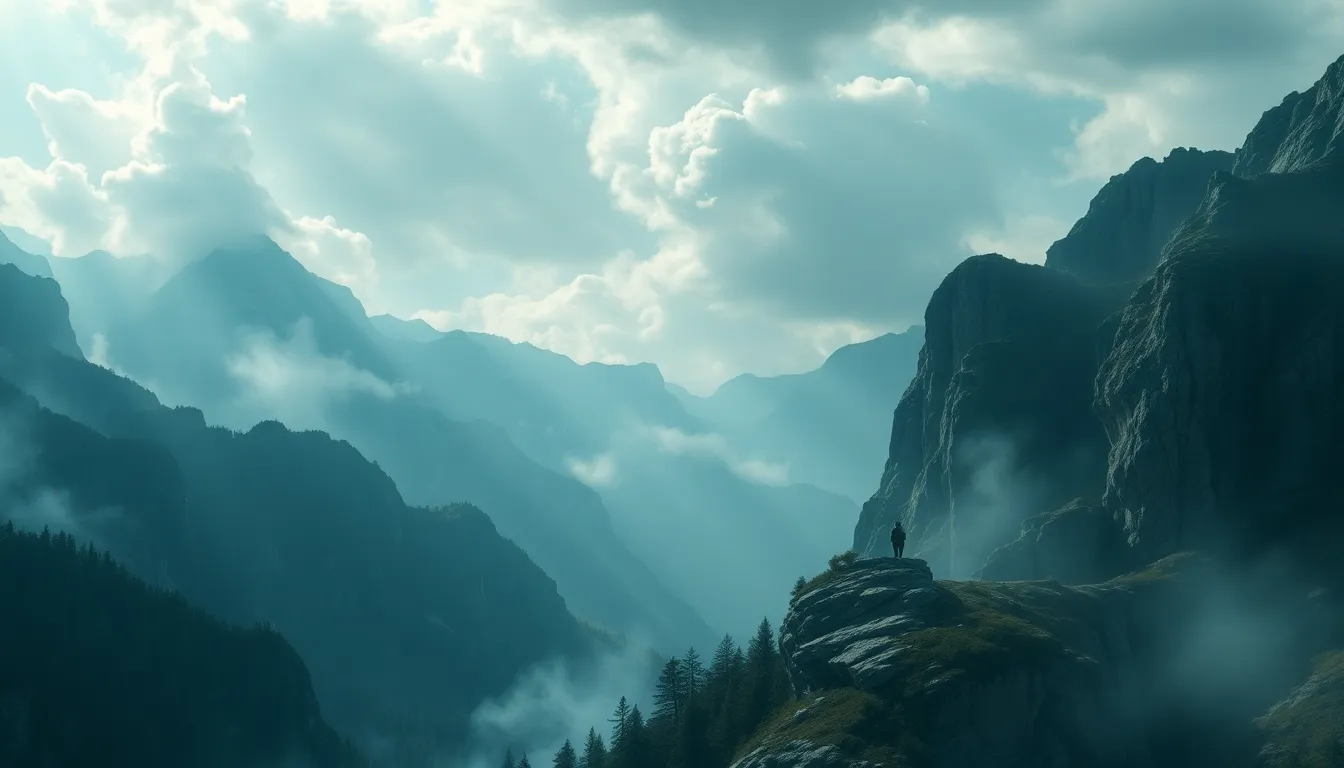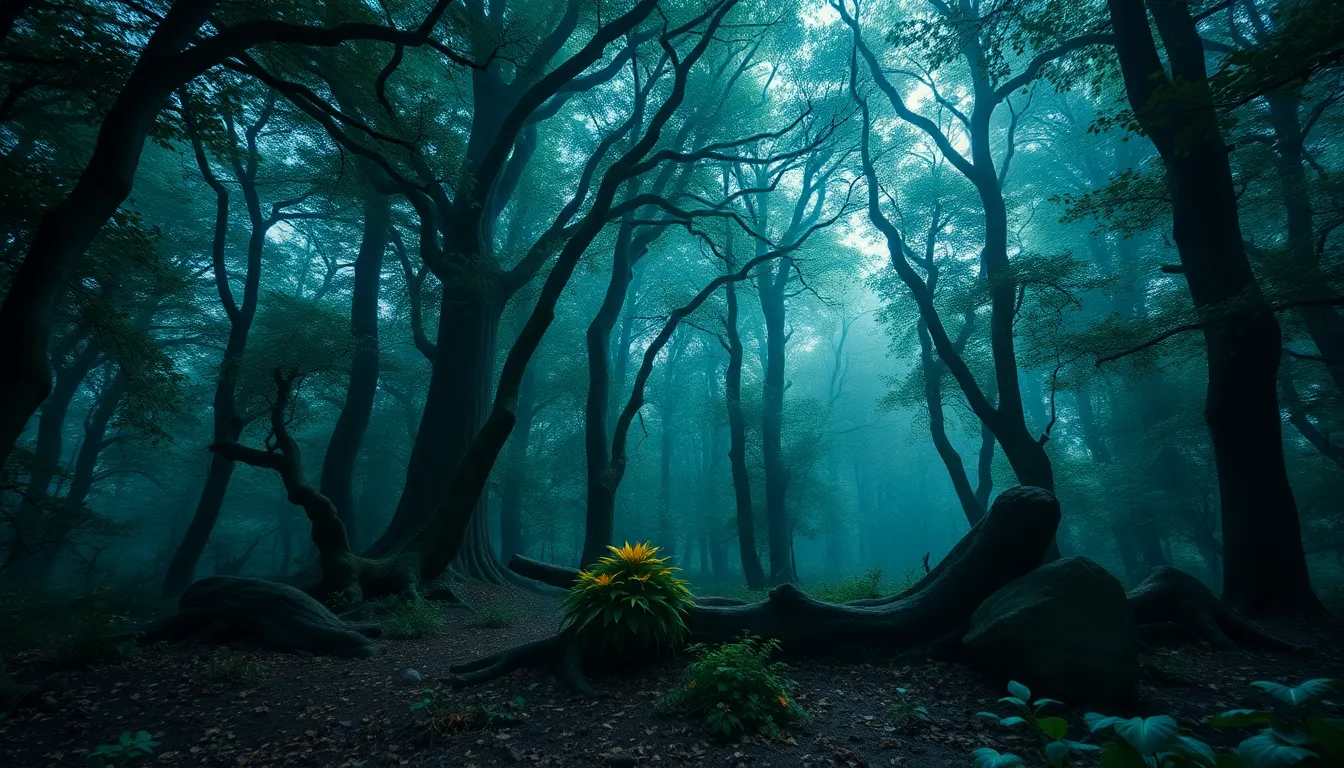The Enchanted Heights: Myths of Magic in the Mountains
1. Introduction to Enchanted Heights
The mountains have long been regarded as mystical places, shrouded in mystery and wonder. Their towering peaks and deep valleys evoke a sense of awe, inspiring countless stories and legends. From the ancient times to modern-day, the allure of myths and legends in mountainous regions has captivated the imagination of people across cultures.
2. Historical Context of Mountain Myths
Throughout history, various civilizations have revered mountains as sacred spaces. In many ancient cultures, mountains were believed to be the abodes of gods and spirits, serving as a bridge between the earthly realm and the divine.
- Ancient Civilizations: Civilizations such as the Greeks, Romans, and Aztecs constructed myths around mountains, attributing them with divine significance.
- Folklore Across Cultures: Mountains have played a crucial role in folklore, with stories often reflecting the values, fears, and aspirations of the societies that inhabit them.
3. Notable Mountain Myths Around the World
Different cultures have produced a plethora of mountain myths, each rich in symbolism and meaning. Here are some notable examples:
- The Himalayan Legends of the Yeti: In the towering Himalayas, tales of the elusive Yeti, or ‘Abominable Snowman,’ persist, described as a large, ape-like creature said to inhabit the snowy peaks.
- The Celtic Tales of Faeries in the Scottish Highlands: The Scottish Highlands are steeped in fairy lore, with many believing that these magical beings reside in the hills and glens, granting blessings or curses to those who encounter them.
- The Native American Stories of Sacred Peaks: Many Native American tribes consider certain mountains, like Mount Shasta and the Black Hills, to be sacred, imbued with spiritual significance and the presence of ancestral spirits.
4. Magical Creatures of the Mountains
Mountains are often home to various mythical beings, each symbolizing different aspects of nature and culture.
- Griffins: These majestic creatures, with the body of a lion and the head of an eagle, are often depicted as guardians of treasures in mountainous regions.
- Dragons: In many cultures, dragons are associated with mountains, often representing power, wisdom, and the untamed forces of nature.
- Gnomes: In European folklore, gnomes are often depicted as small, wise creatures that dwell in the mountains, safeguarding the earth’s treasures.
These creatures often carry deep symbolism, representing the harmony and conflict between humanity and the natural world.
5. The Role of Nature in Mountain Myths
The natural features of mountains, including caves, rivers, and forests, contribute significantly to local legends and myths.
- Caves: Often seen as portals to the underworld or places of refuge for mythical beings, caves play a central role in many mountain myths.
- Rivers: Flowing from mountain springs, rivers are frequently associated with life, healing, and transformation in folklore.
This interplay between environmental elements and magical narratives enriches the stories and deepens their connection to the physical landscape.
6. The Influence of Geography on Myth Creation
The geographic features of mountains significantly shape the myths and stories that arise from them.
- Different Terrains: The ruggedness of a mountain range can influence the tone and nature of the myths, with steep cliffs and deep valleys often creating a sense of peril and mystery.
- Climate and Ecology: The flora and fauna of a region also impact the perception of magic, with lush, vibrant ecosystems giving rise to tales of abundant life and mystical encounters.
7. Modern Interpretations of Mountain Myths
In contemporary literature and media, mountain magic continues to be a popular theme.
- Literature: Authors often draw inspiration from traditional mountain myths, weaving them into new narratives that appeal to modern audiences.
- Media: Films and documentaries explore the mystical aspects of mountains, highlighting the enduring fascination with these landscapes.
- Folklore and Sustainability: There is a resurgence of interest in preserving folklore and promoting sustainable practices that honor the mountains and their stories.
8. The Psychological Appeal of Mountain Myths
Humans are inherently drawn to enchanted narratives, especially those centered around mountains.
- Escapism: Mountain myths provide an escape from everyday life, inviting individuals into realms of adventure and wonder.
- Adventure: The challenge of conquering mountains parallels the journey of overcoming obstacles in one’s own life, making these myths relatable and inspiring.
9. Preserving Mountain Myths in a Changing World
As modernization spreads, the preservation of mountain myths becomes increasingly important.
- Cultural Identity: Folklore plays a vital role in maintaining cultural identity and continuity, connecting communities to their heritage.
- Documentation Efforts: Various initiatives aim to document and preserve mountain myths, ensuring that these enchanting stories are passed down to future generations.
10. Conclusion: The Lasting Legacy of Mountain Magic
The myths surrounding mountains hold a lasting legacy, reflecting the human experience and our relationship with nature. These stories continue to inspire exploration and appreciation for the magical aspects of the natural world. As we delve into the enchanting heights of our planet, let us remember to honor and cherish the tales that shape our understanding of the mountains.




